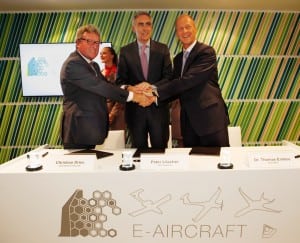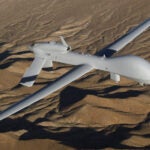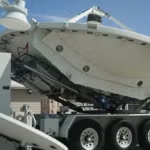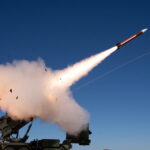
With the goal of lower costs and emissions, the European Aeronautic Defense and Space Co. (EADS) and Siemens yesterday signed a Memorandum of Understanding (MoU) to introduce new electric propulsion systems. With Austria-based Diamond Aircraft, the companies are showcasing a second generation serial hybrid electric airplane at the Paris Air Show, where the EADS and Siemens CEOs inked the research agreement. The research partnership’s goal is to introduce hybrid drive systems for helicopters and large airplanes, while the airworthiness certification…

 By
By 











